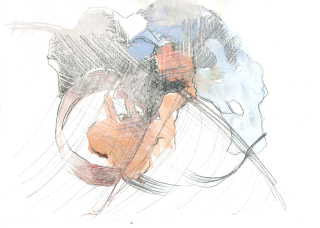We continued to extend the idea of our hotels: how a person's view of utopia and dystopia is dependent on their experiences. As abstract as these plans seem, they explore the experience that the plantroom is trying to portray rather than giving us a distinct, solid understanding of the plantroom's overall structure. In all these images there is a sense of space and materiality, but its placement differs due to the viewers perception. We wanted to start abstract, as you would be open to many ideas rather than finalizing your ideas at an early stage. The form and function will simply follow during the process of analyzing, subtracting and adding to the drawings.
Here is a more practical and realistic plan/section of the Waiheke plant room. Most of it is embedded into the ground and only sections where light is to enter, is exposed to the surface. This way only certain parts of the structure will receive light which will create an interesting interior atmosphere. This plan also follows the hotels overall idea where the architecture especially interior is revealed to you bit by bit as you move inwards.
Develop in realistic scale
Abstract models
The relationship between the exteior and the interior becomes extremely important in this design studio. Picking up our initial philosophy, we conveyed the idea of 'no fixation' by placing a 'utopic' plantroom in the city whereas a 'dystopic' plantroom in the waiheke hotel.This decision articulates our philosophy of how whether a hotel is dystopia or utopia depends on the persona's experience and feelings.













































